17 Best Russian Learning Apps & How to Choose the Right One for You
.jpg%3F2025-10-31T11%3A59%3A42.981Z&w=3840&q=100)
Michael Xing, Founder of Pingo AI
Learning Russian can feel like starting from scratch, with a new alphabet, unfamiliar sounds, and grammar rules that work differently from English. That is why many learners turn to top language learning apps for guided lessons, spaced repetition, pronunciation practice, and personal tutors. This guide will compare the best Russian learning apps and explain how to choose the right one so you can pick the app that matches your level and goals. Finding the right app among dozens of options for Russian vocabulary, Cyrillic reading, speaking practice, grammar drills, flashcards, and immersion lessons can feel overwhelming.
Pingo AI language learning app offers personalized lessons, clear pronunciation feedback, smart flashcards, and quick progress checks to help you practice Cyrillic, grow vocabulary, build grammar confidence, and decide which app features matter most.
Summary
- Different apps solve different gaps, and the curated list profiles 17 top Russian learning apps by what they actually help you do, so pick tools based on whether you need to speak, read, write, or build vocabulary.
- Replacing passive drills with focused speaking reps can compress timelines. One learner moved from A0 to B2 in ten months after swapping two 20-minute passive sessions a day for one 10-minute focused speaking rep plus targeted feedback.
- Personalization and voice tech are decisive, with 85% of learners preferring personalized learning paths and 60% saying voice recognition features are crucial for effective language learning.
- Practice design should favor short, frequent, loaded tasks, for example, five short speaking slots of 7 to 12 minutes per week or five 12-minute sessions, and learners should aim to reduce average hesitation time by 30 to 50 percent over four weeks.
- The common failure mode is predictable: after roughly six months of relying mainly on flashcards and gamified drills, many learners report stalled progress because recognition does not equal usable speech under pressure.
- Start with decoding and high-utility lexis, learn the 33-letter Cyrillic script in a focused session of up to two hours, then target 200 to 400 core words using a spaced plan such as 10 new items per day for two weeks.
- This is where Pingo AI's AI language learning app fits in, addressing the gap between recognition and production with conversation-first roleplay across 200+ real-life scenarios, Tutor Mode for guided fundamentals, and instant prioritized corrections to shorten hesitation and sentence repair time.
17 Best Russian Learning Apps
These are the best apps to learn Russian, organized by what they actually help you do: speak, read, write, or build vocabulary. I’ll list all 17, explain who each one serves best, and call out where conversational practice should replace passive drilling if your goal is real-world speaking confidence.
1. Pingo AI
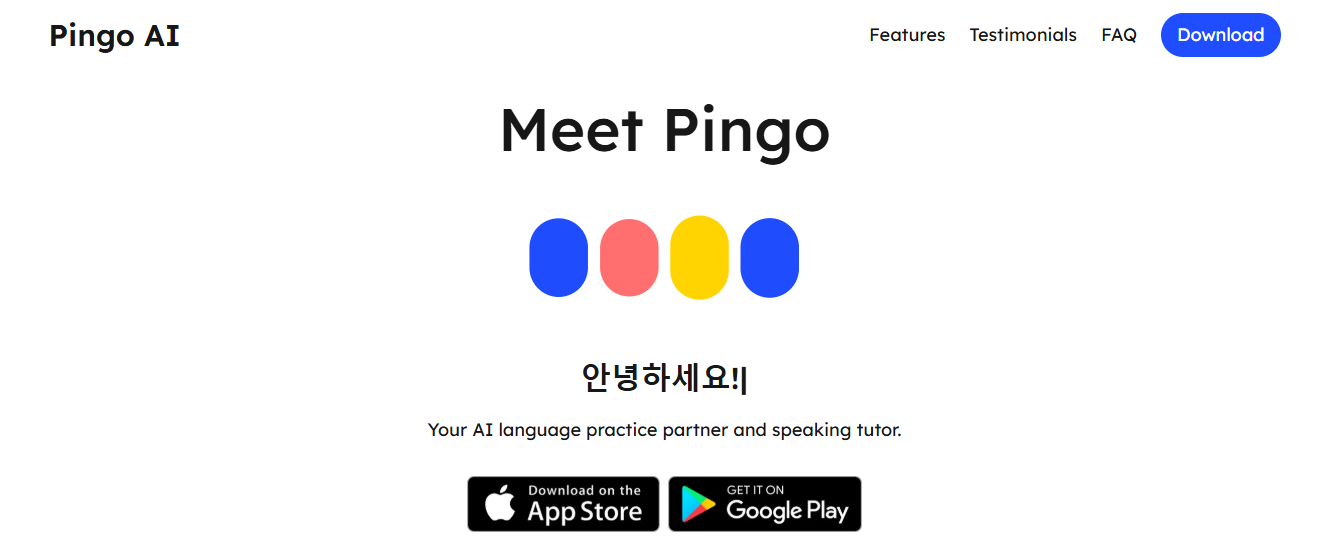
Pingo AI takes a conversation-first approach, prioritizing real spoken practice over flashcards or endless grammar rules. It simulates natural exchanges across 200-plus real-life scenarios, offers a Tutor Mode for guided fundamentals, and gives instant, detailed corrections so learners see measurable improvements in pronunciation and sentence flow.
If you want to compress the time from practice to usable speech, platforms such as Pingo AI position themselves as speaking-first accelerators that focus on confidence, not just recognition.
2. Busuu
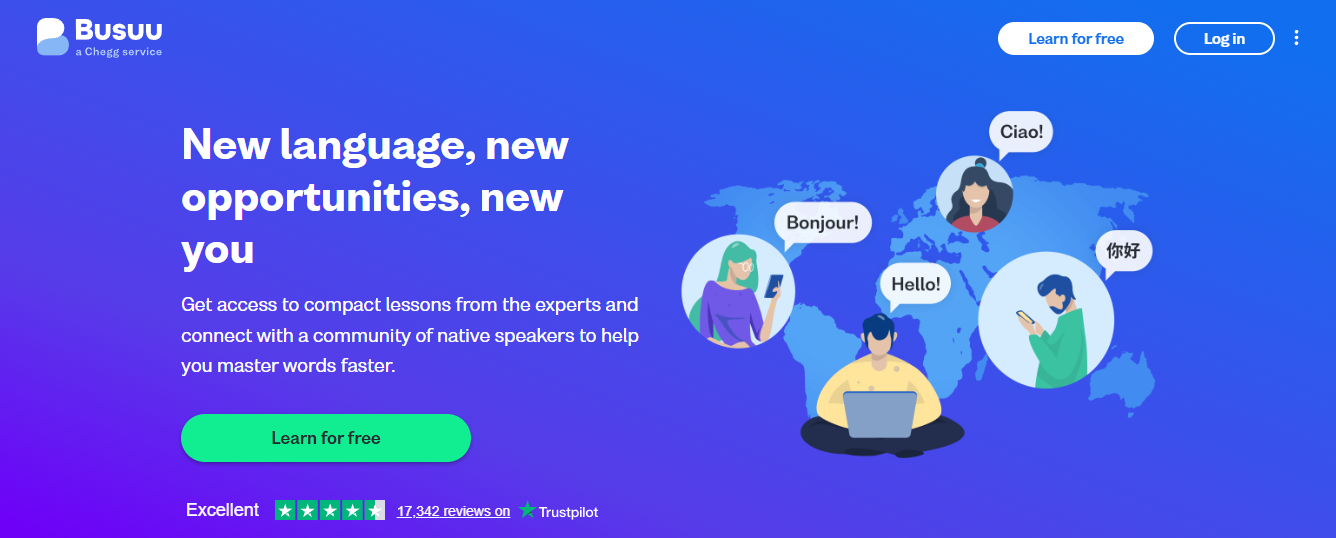
Busuu delivers a structured, course-style path from alphabet to conversation, with a placement test to place you correctly. The free tier covers interactive drills and quizzes; Premium unlocks offline lessons, targeted grammar, and review sessions; Premium Plus adds a personalized study plan, conversation practice, and an official certificate path. Choose Busuu if you want classroom-like sequencing with checkpoints and credential options.
3. Duolingo
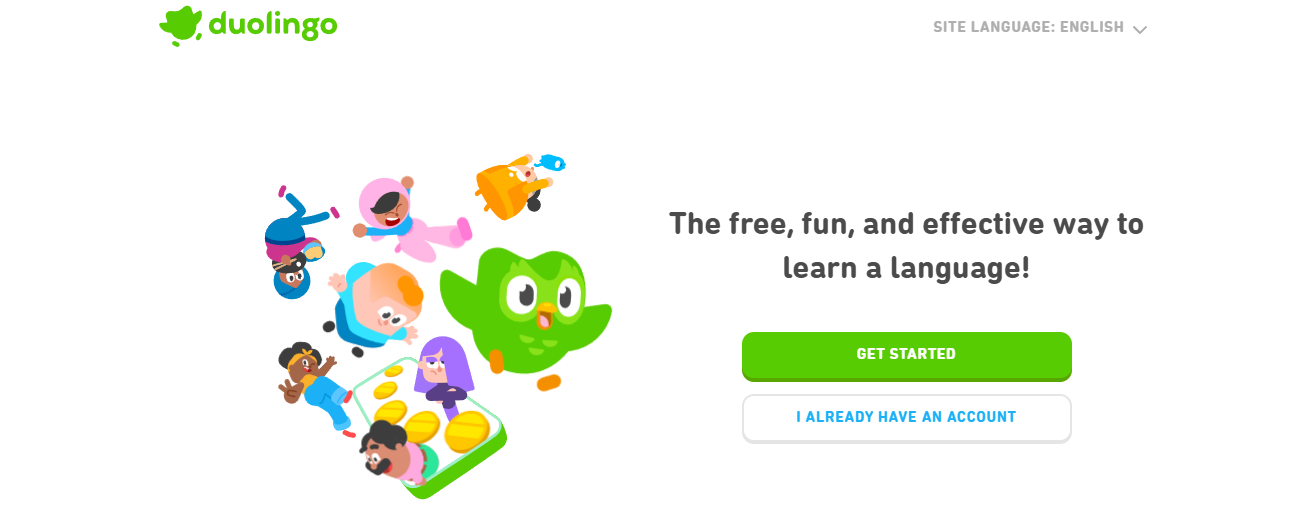
Duolingo teaches Russian through gamified, bite-sized lessons that emphasize sentence building and repetition. It’s excellent for getting comfortable with basic structures and staying consistent through daily streaks, but it is limited for attaining fluent conversation on its own. Consider Duolingo as a foundation tool, not the final stage; pair it with live speaking practice to convert passive gains into active use.
4. Drops
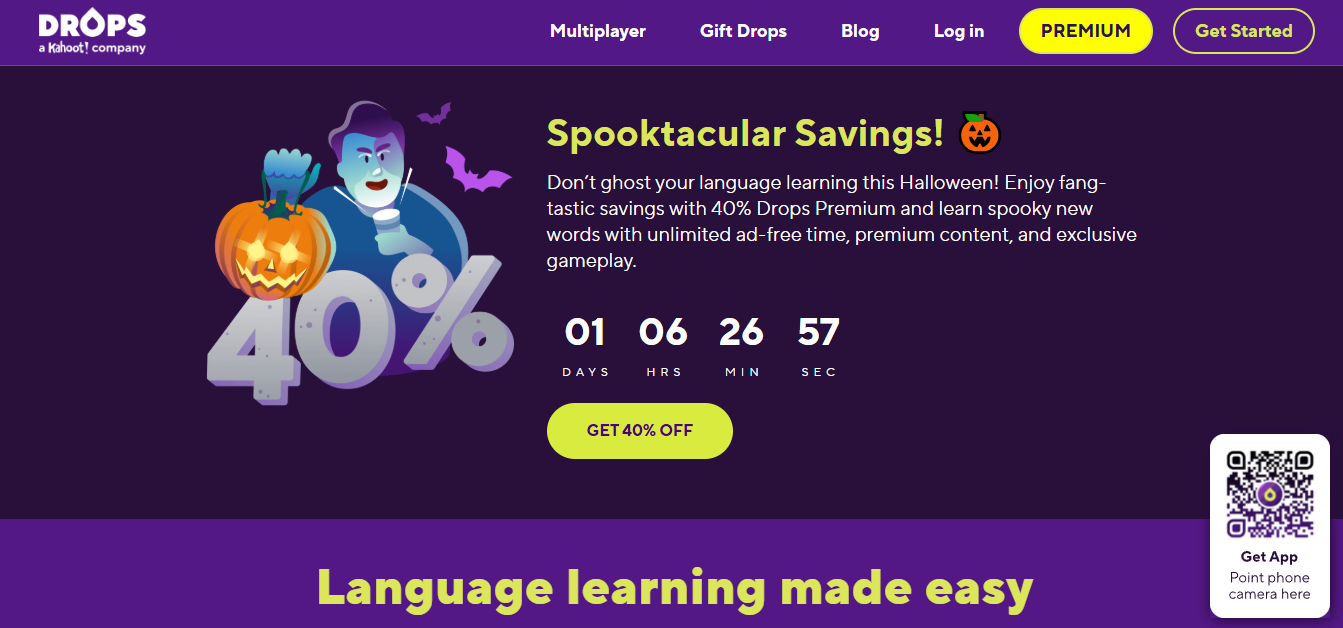
Drops focuses on rapid vocabulary acquisition in five-minute sessions, using illustrations to anchor new words. It’s highly efficient for travel-ready phrases and survival vocabulary, and its short-session constraint makes daily habit formation easy. Use Drops when you need high recall of topical words, but add speaking practice elsewhere to make those words speakable.
5. Memrise

Memrise pairs spaced repetition with authentic video clips of native speakers, combining SRS memory science with real accents and natural phrasing. The app is strong for long-term retention and listening exposure; Memrise Pro adds offline access and richer review analytics. If your goal is to remember words and hear them used naturally, Memrise is a solid bridge between flashcards and real speech.
6. Mondly
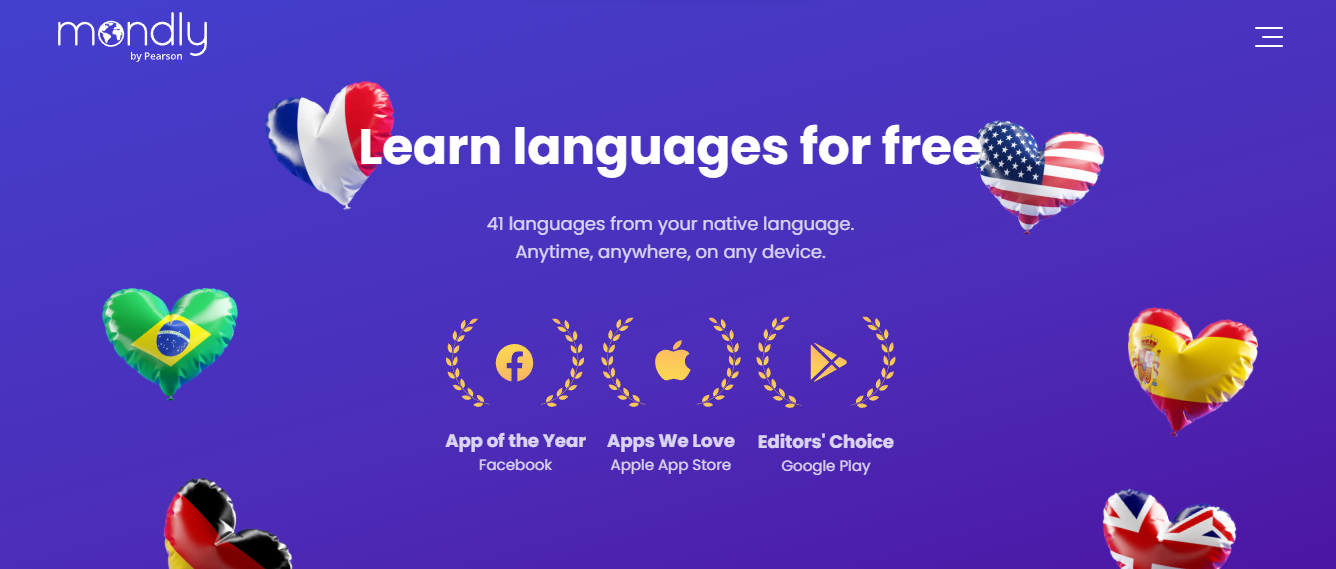
Mondly teaches practical sentence formation quickly, with speech recognition to help pronunciation. It also experiments with augmented reality and virtual reality features for immersive practice. Mondly works when you want rapid sentence assembly and a bit of novelty tech, but check that its conversational depth matches your longer-term speaking goals.
7. Babbel
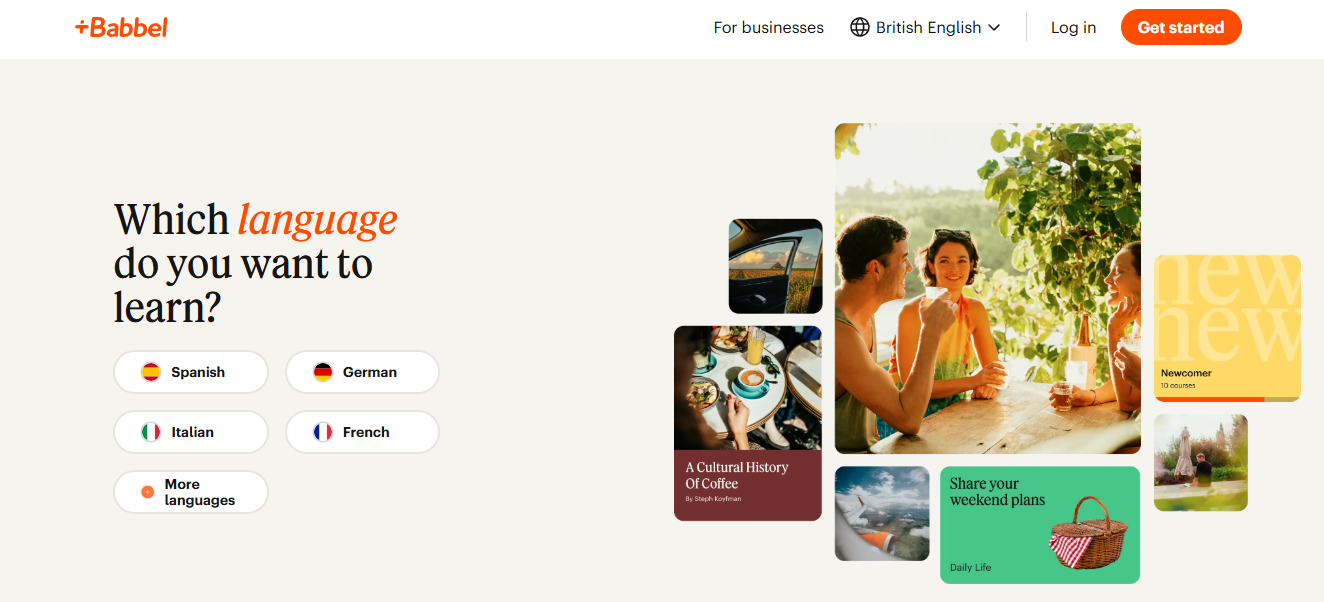
Babbel offers 10 to 15-minute lessons focused on practical dialogues, with explicit grammar points and speech recognition. It’s a pragmatic choice for learners who prefer short, focused sessions that touch on listening, speaking, reading, and writing. If you value structured grammar paired with speaking prompts, Babbel fits that middle ground.
8. Russian Cyrillic in 3 Hours

This single-purpose app teaches you the Cyrillic alphabet quickly, using contextual examples that show how letters map to familiar English words. It’s an efficient primer for absolute beginners who need to get reading and pronunciation fundamentals out of the way before tackling real conversation.
9. Rosetta Stone

Rosetta Stone uses immersion, images, and native audio across spaced repetition to build intuitive comprehension without translation crutches. Its speech recognition and reading modules are strong. If you want a full-immersion, listening-first method that enforces thinking in Russian, Rosetta Stone remains a reliable, disciplined option.
10. Write It! Russian

Write It! Russian teaches writing the Cyrillic alphabet stroke by stroke, pairing handwriting practice with audio. It’s ideal for learners who want to internalize orthography and develop muscle memory for writing in Russian, but it functions best alongside listening and speaking practice.
11. Learn Russian 11,000 Words

This is a heavyweight vocabulary app with thematic grouping across seven levels and 120-plus topics. It’s designed for breadth of topical vocabulary and rewards learners who already have a grammar base and need to expand their lexical range quickly. Expect to pay after the initial lessons if you continue.
12. HelloTalk
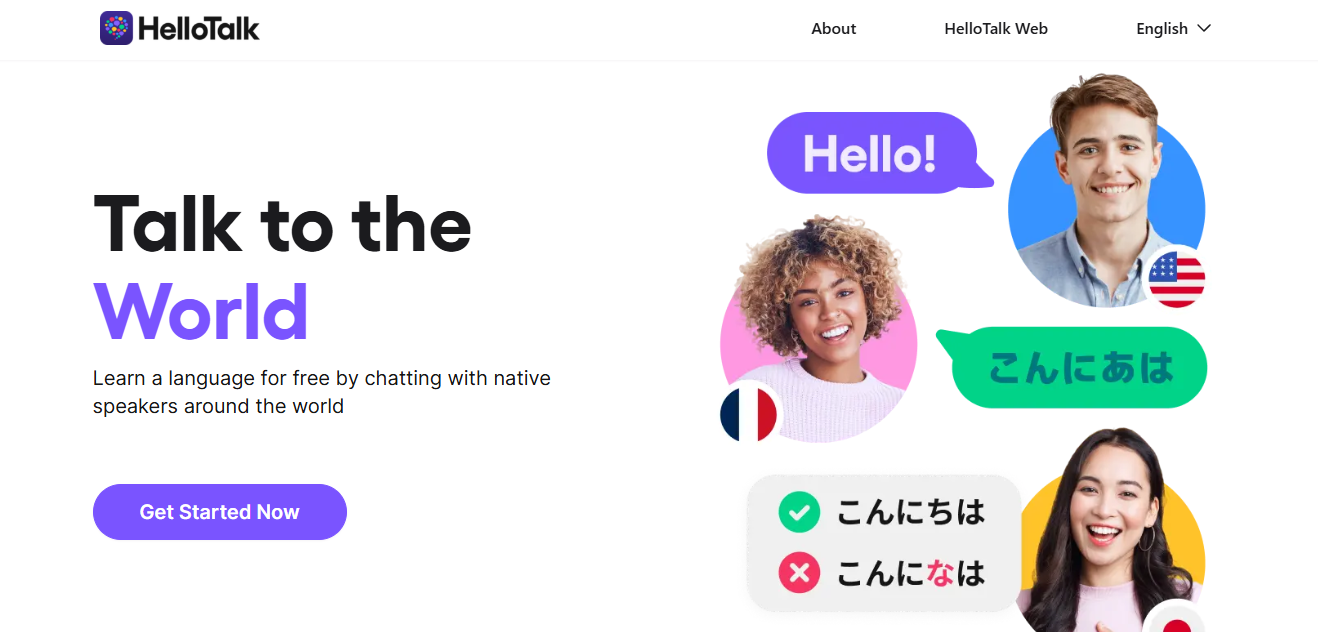
HelloTalk connects you with native speakers for language exchange using text, voice, and video, plus machine translation and transliteration tools. It’s a social practice environment, best for intermediate learners who can hold a basic conversation and want corrective, contextual exchanges with natives.
13. LingoDeer

LingoDeer builds Russian from the ground up with organized lessons, cultural notes, and clear grammar explanations. It targets reading and speaking practice while explaining rules in digestible chunks, which makes it especially useful for learners who want grammatical clarity alongside practice.
14. Tandem
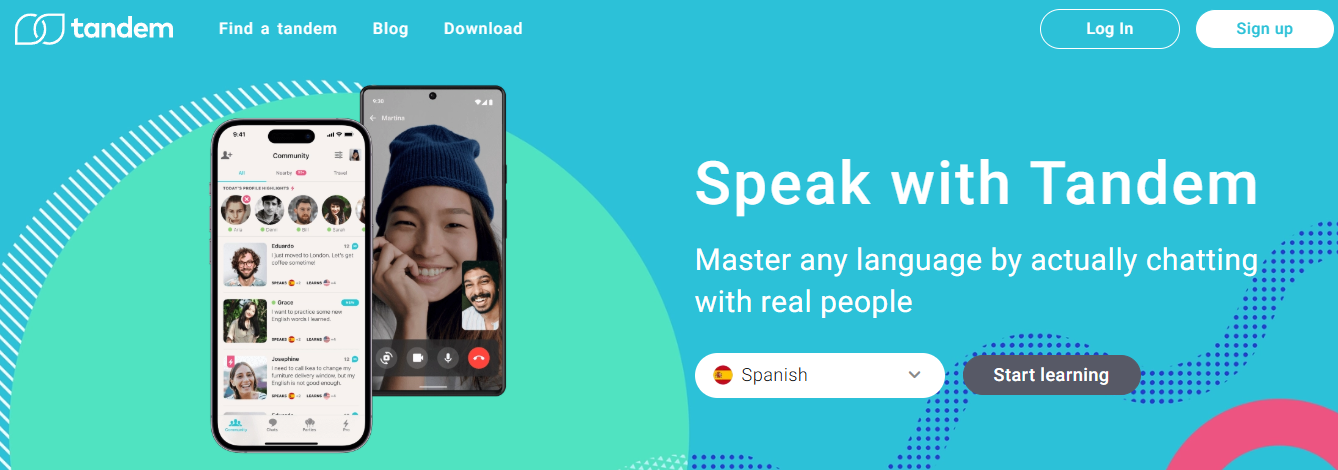
Tandem matches you with language partners and supports group chats, making it easy to practice in multi-person conversations that resemble real social use. This is a good free option for conversational practice if you can find compatible partners and commit to regular exchanges.
15. Anki

Anki is a highly customizable flashcard system with SRS scheduling, audio, images, and shared decks. For Russian learners, community-made decks provide native audio and curated vocab lists, and Anki is indispensable when you want precise control over what you memorize and when.
16. LingQ
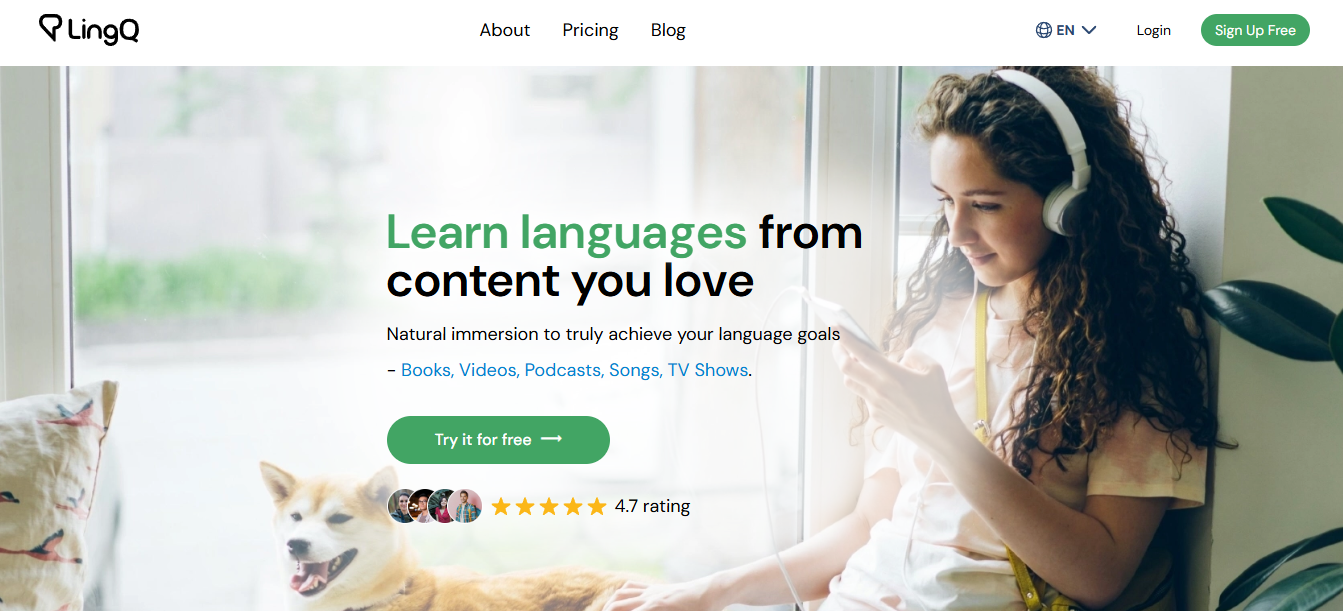
LingQ emphasizes learning from native content by turning real audio and text into lessons with instant lookup and flashcards, and it offers thousands of Russian lessons. Use LingQ to study naturally occurring language, build vocabulary from context, and convert passive reading into active recall with SRS review.
17. SemesterRus

SemesterRus focuses on TORFL exam preparation across levels A1 to B1, with dialogues, vocabulary, exercises, and an exam-style practice section. It’s rigorous and exam-oriented; beginners may find some material demanding, but anyone serious about TORFL preparation will appreciate its structure.
Related Reading
- Babbel vs Duolingo
- How Much Is Duolingo Max
- How Much Does Babbel Cost
- Rosetta Stone vs Duolingo
- Best Apps to Learn Spanish
- Best Apps to Learn Japanese
- Busuu vs Duolingo
- Duolingo Alternatives
What Makes an Effective Language Learning App?

An effective language app does one job above all. It turns passive knowledge into reliable speech you can use under pressure, and it measures that ability in ways that matter. It does this by breaking speaking into repeatable tasks, prioritizing corrections, and routing practice to the exact weaknesses that block conversation.
How Does the App Turn Practice Into a Durable Skill?
When practice is sound, it maps to specific performance targets, not vague completion badges. Design practice as short, focused tasks that mirror real interactions, for example, a 90-second ordering task that forces you to retrieve phrases, simplify grammar, and manage turn-taking.
Pair that with immediate micro-drills that isolate the error you just made, then return you to the full task so skills re-integrate. Think of it like weight training, not cardio, you lift the exact motion you need to strengthen, then test the movement under load.
What Kind of Feedback Actually Changes Behavior?
Feedback must be prioritized, actionable, and minimal. Instead of listing every mistake, the app should surface the one error that most severely disrupted the learner’s communication, explain why it happened, show a short model, and provide two quick drills to fix it.
High-resolution feedback should include pronunciation scoring, fluency pacing, and a cause-level note, for example, whether the error came from grammar transfer or missing vocabulary. Many learners treat correction as criticism; make it clearly constructive and tied to a repeatable drill, and you change the behavior, not just the mood.
How Should Adaptivity Be Built So It Really Helps Learners?
Adaptive systems are helpful when they reshape practice around measurable gaps, not just adjust difficulty. Use models that track transfer, for example, how well a learner can move from guided roleplay to an unprompted one-minute monologue on the same topic.
That kind of progress metric forces the app to optimize for usable speech. The preference for personalization shows up in usage patterns. Selin Namak reports that 85% of language learners prefer apps that offer personalized learning paths, which explains why tailoring practice schedules and task choices pays off quickly.
How Important Is Voice Tech for Real Speaking Gains?
Voice interaction is central when the goal is production, not recognition. Accurate speech recognition, combined with intelligibility scoring, gives learners two things:
- Objective measurement
- Safe place to experiment with sounds and rhythms
That technical need is evident in learner preferences. Selin Namak reports that 60% of learners find voice recognition features crucial for effective language learning, and this matters because without reliable vocal feedback, improvements in spoken fluency stall.
How Do You Keep Users Engaged Without Hollow Gamification?
Engagement should reward competence, not just streaks. Tie incentives to transferable outcomes, for example, unlocking short, live roleplays with a tutor after specific task mastery, or giving a visible metric that tracks unprompted speech time over weeks.
Social layers should be low-friction, focused on brief accountability checks and real exchanges that replicate the stress of actual conversation. When gamification supports real tasks, it becomes the scaffolding for durable habits.
What About Privacy, Credibility, and Long-Term Retention?
An app that records voice and personal responses must be transparent about data handling and give learners control, including local audio storage and easy export.
Credibility grows when the app publishes its scoring logic, offers calibration with native-speaker samples, and sets clear, time-bound milestones so learners can see that weeks of practice deliver measurable gains. Retention follows when progress is visible, practice is satisfying, and the system respects a learner’s time and data.
Related Reading
- Memrise vs Duolingo
- Best Apps to Learn French
- Lingodeer vs Duolingo
- Pimsleur vs Babbel
- Jumpspeak vs Duolingo
- Best Apps to Learn Mandarin
- Best Apps to Learn Arabic
- Best Apps for Learning English
How to Choose the Right Russian App for You

Choose the right French app by matching it to the single skill you most need to improve, then validate that match with a short, real-world test you can repeat weekly. Pick tools that make speaking nonnegotiable, fit your schedule, and show measurable gains in actual conversation, not just in-game points.
What Outcome Do You Actually Need From This App?
If your goal is to pass an oral exam or hold a phone call, prioritize production over recognition. When we worked with a learner targeting the TCF, they moved from A0 to B2 in ten months by replacing two 20-minute passive drills a day with one 10-minute focused speaking rep and targeted feedback, which changed habits and reduced avoidance. That kind of timeframe shows how matching task design to the goal beats chasing a long feature list.
How Will You Test Whether an App Produces Usable Speech?
Record a one-minute unscripted response to a prompt, note hesitation time and repair attempts, then run the app’s feedback and repeat the same prompt after three days. Treat apps like auditioning a tutor, not installing software; the right one makes your second try noticeably smoother.
Also, use market signals sparingly; for example, a substantial reach metric such as over 1 million downloads can indicate wide adoption, while a high satisfaction indicator like a 4.5-star average rating suggests consistent user experience, but neither replaces your hands-on test.
How Much Time Should You Plan Each Week?
If your schedule is tight, choose five short speaking slots of 7 to 12 minutes spread across the week, because frequent, loaded practice transfers far better than one long session. This addresses the standard failure mode we see: learners who study irregularly for months suddenly discover they cannot produce sentences under pressure.
Another case we supported reached exam readiness in 11 months by swapping long passive sessions for brief, daily roleplays that fit between work tasks.
Which Tradeoffs Are Worth Accepting When Pairing Apps?
If you need vocabulary breadth, an SRS tool is efficient, but expect brittle recall unless you embed those words in spoken role-plays. If you want clarity in grammar, a structured course helps, but it will not build automaticity without repetition under communicative load.
The practical choice is to use one conversation-first app for production work, one SRS or media tool for lexical input, and scheduled checkpoints to force yourself to produce, not just recognize.
Conversation-First Russian Learning with Pingo AI
Pingo's AI language-learning app focuses on conversation-first practice powered by expressive AI, giving learners adaptive feedback and two tailored modes for beginners and advanced speakers, so practice feels natural and stays focused on speaking. Try it free and see whether your hesitation time and sentence repairs shrink after a week of focused roleplay.
5 Best Tips for Learning Russian

These five tips are the pragmatic roadmap I use with learners who want real speaking ability, not just recognition. Follow them in order, turn each into a short habit, and you will see measurable, usable progress within weeks.
1. Start with Cyrillic
Learn the 33 letters first, fast. Spend one focused session, two hours at most, and you will turn inscrutable signs into readable words; that shifts learning from blind guessing to pattern recognition.
Practice Technique
Write each letter once, say its sound aloud, then read ten cognates such as аэропорт, кафе, and метро to build instant payoff. When we ran a one-day Cyrillic clinic for beginner learners, they could read simple words and interpret street signs within three hours, which removed the dread that usually stalls momentum.
Common Failure
Treating the alphabet as abstract rules rather than a decoding tool makes early texts feel inaccessible; fix that by reading short labels and menus right away.
2. Learn the Basic Words
Target the 200 to 400 high-utility words and short phrases that show up in everyday speech. Use a spaced plan: 10 new items per day for two weeks, review nightly for 5 minutes, then force production in a three-line self-dialogue where you must use each word aloud.
Prioritize verbs and question forms that let you do things, not just name things, because speaking is an action. Emotionally, this step removes the helplessness learners report when they can’t say anything in a real interaction; mastering a compact core buys confidence, and confidence reduces avoidance.
3. Immerse with Intent
Make Russian the soundscape of your day, but do it with a task, not passive background noise. Replace an English podcast episode with a 10-minute Russian news clip and transcribe one short sentence, then say it back twice. Remember, you are training retrieval, so pick content you can re-run and practice aloud, two to three times each session.
Keep one practical anchor, for example, morning coffee vocabulary, and repeat it across media so memory transfers from recognition to production. Also, keep in perspective that this language reaches far beyond a single country, as over 200 million people worldwide speak Russian.
4. Practice Your Skills Every Day
Design micro-sessions that load retrieval, not only review. A weekly rhythm that works: five sessions of 12 minutes each, two focused roleplays, two targeted pronunciation drills, one free monologue. Track one metric:
- Average hesitation time before your first full sentence
- Aim to reduce it by 30-50% over 4 weeks
If you miss a day, do a compensatory 8-minute focused rep the next day rather than cramming; consistency beats intensity. The real failure mode is episodic studying that creates an illusion of progress, so anchor practice in short, frequent, measurable tasks.
5. Find a Native Speaker to Communicate With
Be strategic about exchanges. Use task-based sessions where both partners have a script and an objective, for example, ordering a meal, explaining your city, or solving a travel problem. Start with structured prompts for the first five sessions, then drop into open conversation once hesitation time falls.
Tap into the language’s scale for partner options, because Russian is the 8th most spoken language in the world. If live partners are scarce, book five short, scripted calls per week with one partner and insist on immediate corrective feedback for two repeated mistakes, then test the same scenario solo two days later to close the loop.
Related Reading
- Best Apps for Learning Korean
- Best Apps for Learning Spanish
- Best Apps for Learning Portuguese
- Best Apps for Learning Spanish
- Best Apps for Learning Russian
- Best Apps for Learning Italian
- Best Apps for Learning German
- Best Apps for Learning English
- Best Russian Learning Apps
Start Learning A Language with Pingo for Free Today
I know how deflating it can feel when study time doesn't translate into real speech, so I recommend a short, focused trial of Pingo AI to see whether conversational practice finally moves the needle for you. Pingo shows over 1 million downloads and is rated 4.5 out of 5 stars on the Google Play Store as of 2023-10-01, so a quick experiment is a low-risk way to see if it shortens your hesitation and produces usable phrases.